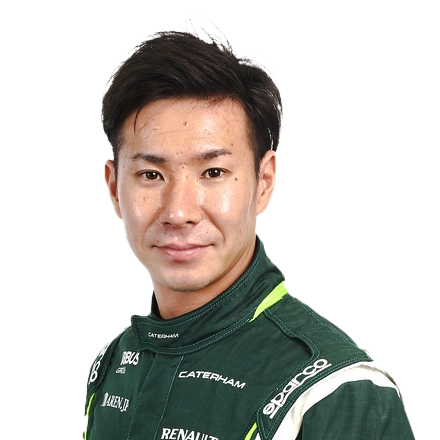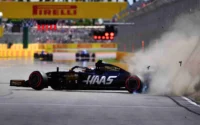Kamui Kobayashi, born 13 September 1986 is a Japanese racing driver and team principal, best known for his spirited Formula One performances from 2009 to 2014, and for his leadership and success in the FIA World Endurance Championship with Toyota Gazoo Racing. A determined racer with a flair for audacious overtakes, Kobayashi quickly earned a cult following for his aggressive style, most notably during his time with Sauber.
| Nationality | Japanese |
|---|---|
| Born | Kamui Kobayashi 13 September 1986 Amagasaki, Hyōgo, Japan |
Kobayashi is the third Japanese driver to score a Formula One podium and one of the country’s most internationally successful racers. His fearless style, especially during overtakes, made him a fan favourite during an era of conservative strategies and limited passing opportunities. His podium at his home race in Suzuka in 2012 remains one of the most celebrated moments in modern Japanese motorsport.
After leaving F1, Kobayashi became one of endurance racing’s most decorated drivers, with two WEC world titles, a 24 Hours of Le Mans victory (2021), and back-to-back Daytona 24 wins (2019, 2020). In 2022, he served as team principal of Toyota Gazoo Racing Europe, overseeing a period of dominance that resulted in multiple manufacturer titles.
Formula One Career
Toyota: 2007–2009
Kobayashi joined Toyota F1 as third third driver in 2008 and 2009. He got his first taste of Grand Prix action during practice at the 2009 Japanese Grand Prix, deputising for Timo Glock. After Glock sustained an injury, Kobayashi was thrust into the spotlight at the 2009 Brazilian Grand Prix, where he delivered a composed performance under chaotic weather conditions and aggressive pressure from Jenson Button, the eventual 2009 World Champion.
Kobayashi’s F1 debut in São Paulo and a points-scoring sixth-place finish in Abu Dhabi just one race later immediately drew praise. His no-nonsense defence and fearless overtakes announced him as a serious driver, with Button dubbing him “crazy, but aggressive—in a good way.”
Sauber: 2010–2012
With Toyota’s shock withdrawal at the end of 2009, Kobayashi signed with BMW Sauber (renamed Sauber F1) for 2010.
2010: In his first full season, Kobayashi impressed, particularly in Valencia, where a long first stint on hard tyres set up a last-lap double overtake on Fernando Alonso and Sébastien Buemi, earning him seventh place. He added points in Silverstone, Hungary, and Japan, eventually finishing the year with 32 points. Commentators like Murray Walker and Martin Brundle praised his attacking style and late-braking style.
2011: Paired with rookie Sergio Pérez, Kobayashi often led the Sauber charge. Despite being disqualified in Australia due to a technical infringement, he achieved several points finishes, most notably fifth place in Monaco and seventh in Canada, where he held second place during the rain-delayed chaos. He ended the season 12th in the standings with 30 points.
2012: This season was Kobayashi’s peak in Formula One. The notorious first-lap crash ruined a career-best second-place start at Spa-Francorchamps, but redemption came at Suzuka, where he delivered a measured, emotional drive to third place—his first and only F1 podium, and the first for a Japanese driver on home soil since Aguri Suzuki in 1990.
He finished the year 12th in the championship with 60 points, but was controversially replaced for 2013 despite strong performances and fan support. Although he raised €8 million in sponsorship to keep his seat, Sauber opted to hire Nico Hülkenberg and Esteban Gutiérrez instead.
Caterham: 2014
After a one-year break, Kobayashi returned to F1 with the Caterham F1 Team, where he partnered Marcus Ericsson. The underfunded outfit offered little chance of success, and with the team collapsing before season’s end, Suzuka 2014 proved to be Kobayashi’s final home Grand Prix.
In total, he made 75 Grand Prix starts, scoring 125 career points, and earned a reputation as one of the most aggressive overtakers and crowd favourites of the early 2010s.
Post-F1 Career and Endurance Racing Success
After Formula One, Kobayashi moved to endurance and GT racing, quickly finding success with Toyota Gazoo Racing in the FIA World Endurance Championship.
- FIA WEC Champion (2019–20, 2021)
- 24 Hours of Le Mans winner (2021)
- 24 Hours of Daytona winner (2019, 2020, with Wayne Taylor Racing)
- Super Formula competitor (active concurrently with WEC)
In 2022, he took on team principal duties at Toyota Gazoo Racing Europe while still competing. Under his leadership, the team secured three consecutive Manufacturers’ Championships (2022–2024).
Endurance Racing Summary
- 24 Hours of Le Mans Wins: 1 (2021)
- FIA WEC Championships: 2 (2019–20, 2021)
- Daytona 24 Wins: 2 (2019, 2020)
- WEC Team Principal Since: 2022
- WEC Constructors’ Titles as Team Principal: 3 (2022–2024)
Kamui Kobayashi Formula One World Championship career
| F1 Career | 2009–2012, 2014 |
|---|---|
| Teams | Toyota, BMW Sauber, Sauber, Caterham |
| Driver number | 10 |
| Entries | 76 (75 starts) |
| Championships | 0 |
| Wins | 0 |
| Podiums | 1 |
| Career points | 125 |
| Pole positions | 0 |
| Fastest laps | 1 |
| First entry | 2009 Brazilian Grand Prix |
| Last entry | 2014 Abu Dhabi Grand Prix |
Kamui Kobayashi Teammates
| 11 drivers | Involvement | First Year | Last Year |
|---|---|---|---|
| Jarno Trulli | 3 | 2009 | |
| Timo Glock | 1 | 2009 | |
| Pedro de la Rosa | 15 | 2010 | 2011 |
| Nick Heidfeld | 5 | 2010 | |
| Sergio Perez | 39 | 2011 | 2012 |
| Esteban Gutierrez | 1 | 2012 | |
| Marcus Ericsson | 15 | 2014 | |
| Robin Frijns | 2 | 2014 | |
| Alexander Rossi | 1 | 2014 | |
| Roberto Merhi | 3 | 2014 | |
| Will Stevens | 1 | 2014 |
Complete Formula One Results
| Year | Entrant | Chassis | Engine | 1 | 2 | 3 | 4 | 5 | 6 | 7 | 8 | 9 | 10 | 11 | 12 | 13 | 14 | 15 | 16 | 17 | 18 | 19 | 20 | WDC | Points |
|---|---|---|---|---|---|---|---|---|---|---|---|---|---|---|---|---|---|---|---|---|---|---|---|---|---|
| 2009 | Panasonic Toyota Racing | Toyota TF109 | Toyota RVX-09 2.4 V8 | AUS | MAL | CHN | BHR | ESP | MON | TUR | GBR | GER | HUN | EUR | BEL | ITA | SIN | JPN PO | BRA 9 | ABU 6 | 18th | 3 | |||
| 2010 | BMW Sauber F1 Team | Sauber C29 | Ferrari 056 2.4 V8 | BHR Ret | AUS Ret | MAL Ret | CHN Ret | ESP 12 | MON Ret | TUR 10 | CAN Ret | EUR 7 | GBR 6 | GER 11 | HUN 9 | BEL 8 | ITA Ret | SIN Ret | JPN 7 | KOR 8 | BRA 10 | ABU 14 | 12th | 32 | |
| 2011 | Sauber F1 Team | Sauber C30 | Ferrari 056 2.4 V8 | AUS DSQ | MAL 7 | CHN 10 | TUR 10 | ESP 10 | MON 5 | CAN 7 | EUR 16 | GBR Ret | GER 9 | HUN 11 | BEL 12 | ITA Ret | SIN 14 | JPN 13 | KOR 15 | IND Ret | ABU 10 | BRA 9 | 12th | 30 | |
| 2012 | Sauber F1 Team | Sauber C31 | Ferrari 056 2.4 V8 | AUS 6 | MAL Ret | CHN 10 | BHR 13 | ESP 5 | MON Ret | CAN 9 | EUR Ret | GBR 11 | GER 4 | HUN 18† | BEL 13 | ITA 9 | SIN 13 | JPN 3 | KOR Ret | IND 14 | ABU 6 | USA 14 | BRA 9 | 12th | 60 |
| 2014 | Caterham F1 Team | Caterham CT05 | Renault Energy F1‑2014 1.6 V6 t | AUS Ret | MAL 13 | BHR 15 | CHN 18 | ESP Ret | MON 13 | CAN Ret | AUT 16 | GBR 15 | GER 16 | HUN Ret | BEL | ITA 17 | SIN DNS | JPN 19 | RUS Ret | USA | BRA | ABU Ret | 22nd | 0 |









